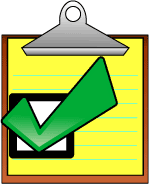How to Select Alarm Monitoring Equipment
Manage your network more effectively by choosing alarm monitoring gear with these key features ...
- Alarm collection and device management. Don't settle for limited alarm monitoring equipment. Get multiprotocol support for every monitoring device in your network, plus discrete alarms, analog alarms, ping alarms, and redundant path reporting.
- Alarm sorting and analysis. Make sense of alarm cascades with automatic intelligent alarm sorting, filtering, processing, and trend analysis.
- Alarm presentation and alert. Send detailed alarm descriptions and correction instructions to NOC and field techs via pager alerts and web interfaces.
Checklist: Alarm Monitoring Equipment Essentials
Here's a handy checklist of key features you should look for in alarm monitoring gear. Print this checklist out and use it to rate gear. If the gear you're evaluating can't meet these basic requirements, cross it off your list.
Critical alarm collection and device management functions
- Multiprotocol support for your existing devices. Make sure your alarm monitoring gear supports alarm collection from all your existing devices, including your older legacy gear. You can get rid of all your specialized consoles and monitor your network from one screen.
- Control relays. Many common site problems, from power outages to high temperature alarms, can be solved by quickly turning on a generator or an air conditioner. Remote operation of site devices is the best way to eliminate unnecessary site visits and it's a lot faster than going in the truck.
- Back-up dial-up reporting. Don't rely on your main network to bring back alarms. If anything goes wrong with your transport, you'll lose your telemetry data just when you need it the most. Look for alarm monitoring gear that supports dial-up alternate path reporting.
- SNMP support and ping alarms. If you're responsible for both telecom and IP gear, consolidate all your alarm management on one alarm monitoring gear system.
- Live analog monitoring. You can't adequately monitor battery levels, temperature, and humidity with one-threshold contact closures. Look for support for analog inputs, including live monitoring of actual analog values.

"All the alarm monitoring gear I make is backed by my no-risk, money-back guarantee. If you buy my gear and you're not satisfied for any reason during the first 30 days, simply return it for a full refund. If my product doesn't solve your problem, I don't want you to have it."
- Bob Berry, CEO, DPS Telecom
Key alarm presentation and alert functions
- Pager and e-mail alerts. Pager and e-mail alerts let your field techs respond to alarms while they're still in the field, speeding repairs and reducing windshield time. Look for alarm monitoring gear with SMS support, which can send detailed alarm alerts to alpha pagers, cell phones, and PDAs.
- Detailed alarm alerts. Summary "major/minor" alarms don't give you enough information to make dispatch decisions. Look for alarm monitoring gear that includes detailed diagnostic information in each alarm.
- Web interface. Everybody knows how to use a Web browser. A Web interface makes sure all your field techs can access your alarm system, from any computer from any location.
- Alarm correction instructions. Detailed instructions included in alarm alerts ensure that system staff, without extra training, will know precisely what to do and who to call if an alarm happens.
Essential alarm sorting and analysis functions
- Custom combo alarms. A low battery isn't a serious problem, and neither is a failed generator - but they're pretty serious when the happen at the same time. Look for alarm monitoring gear that can watch many different alarm inputs and spot vital alarm combinations.
- Alarm sorting. A large, complex network can create a cascade of alarms. Some are unimportant, but others are vital. Look for alarm monitoring gear that can automatically sort and prioritize this flood of information for you.
- Root cause analysis. Finding the underlying cause between alarm cascades can take hours of patient detective work. Look for alarm monitoring gear that can automatically tie in repeated combinations of alarms.
- History and trend analysis. Identify problem areas and eliminate recurring problems with alarm monitoring gear that keeps a complete alarm log that's exportable for trend analysis.
- Nuisance alarm filtering. Even the best NOC staff stops taking alarms seriously if they're bombarded with status alerts, oscillating conditions, and unimportant alarms. Look for alarm monitoring gear that filters these out.
This checklist can only cover the basic functions of high-quality alarm monitoring gear. For a complete guide to alarm monitoring gear, features, or uses, select one of these options.
Option 1: Find alarm monitoring gear products
Option 2: Register for a free Web demo of TMon / IAM alarm monitoring gear
Option 3: See what you can do with TMon / IAM alarm monitoring equipment


